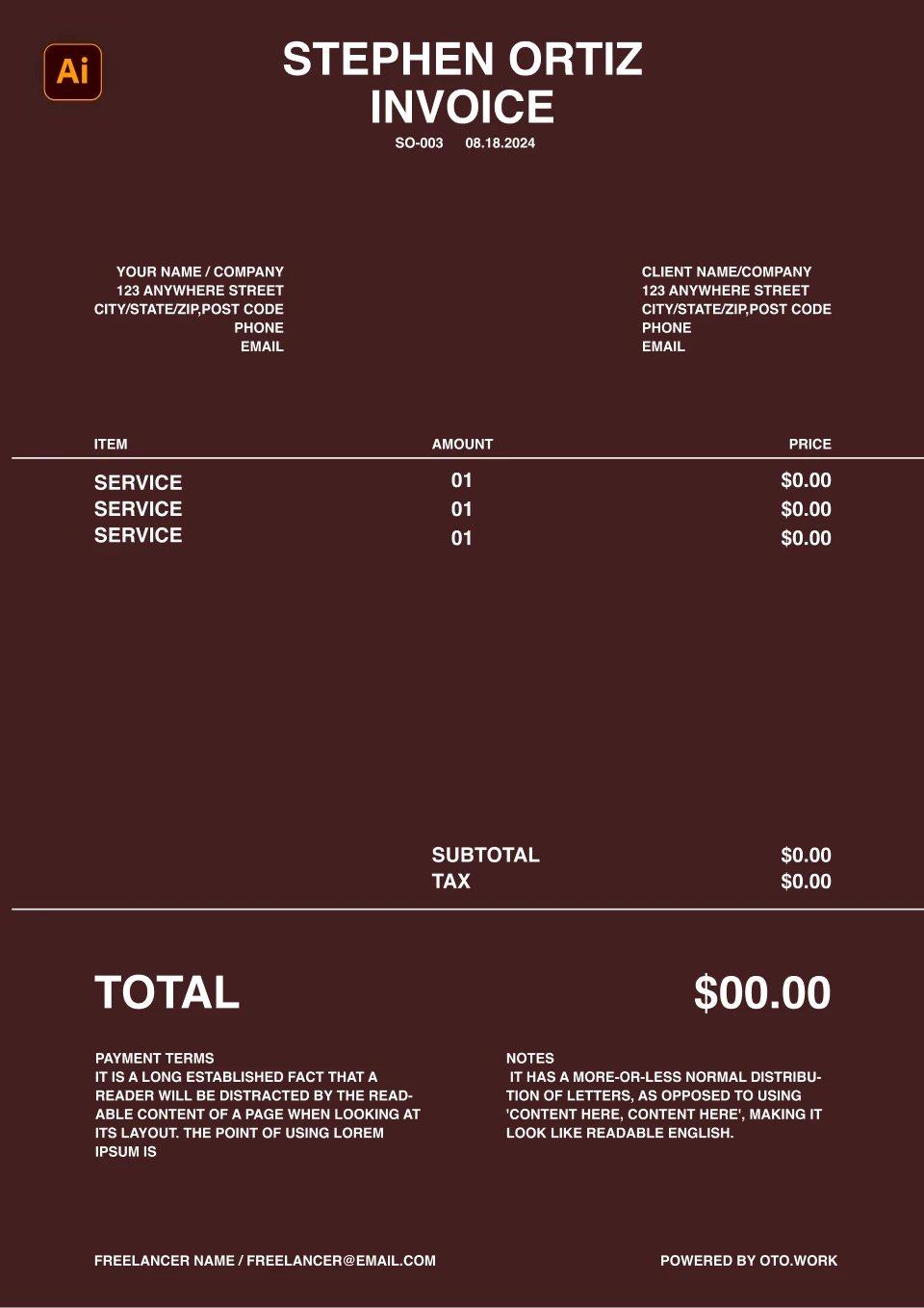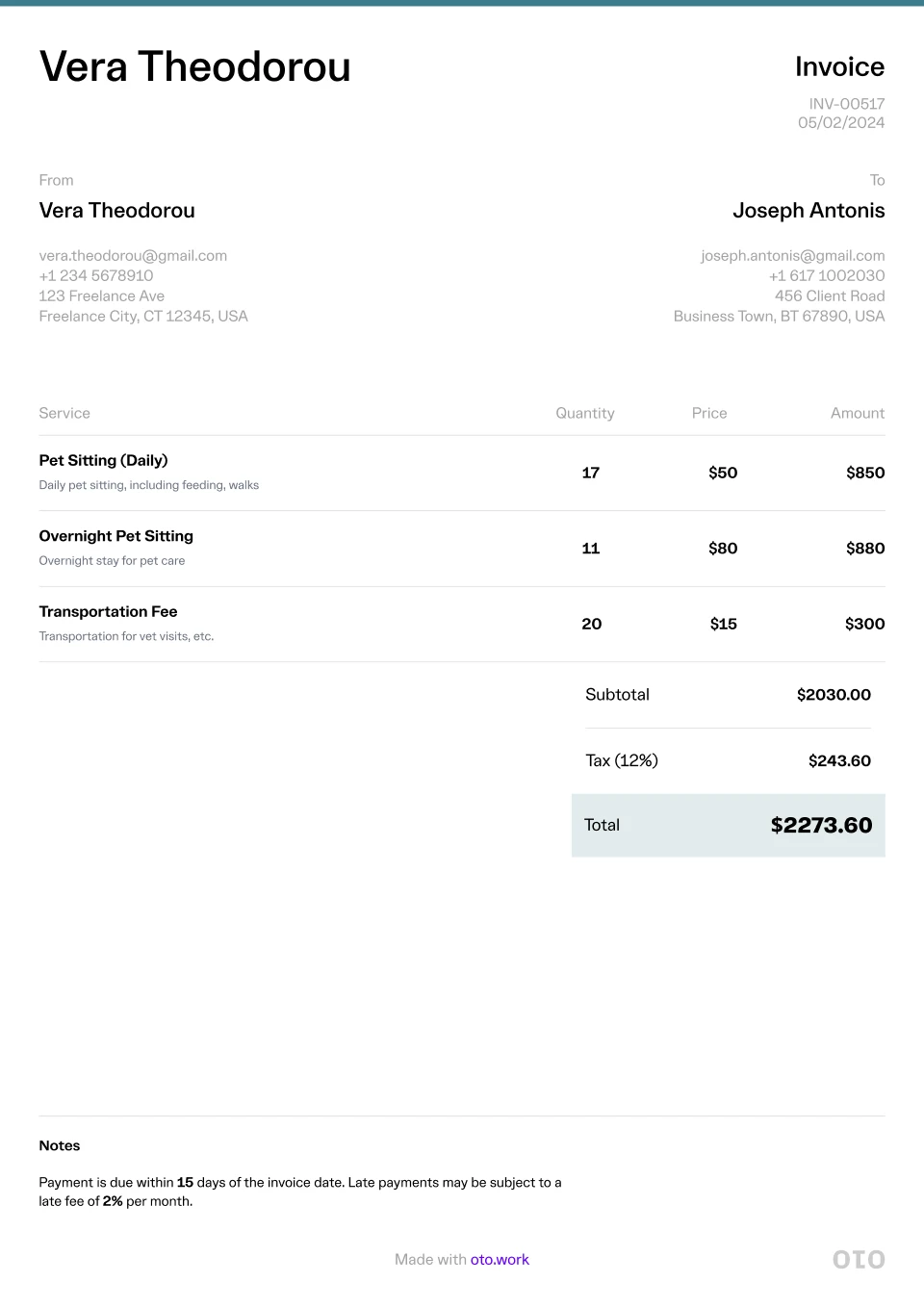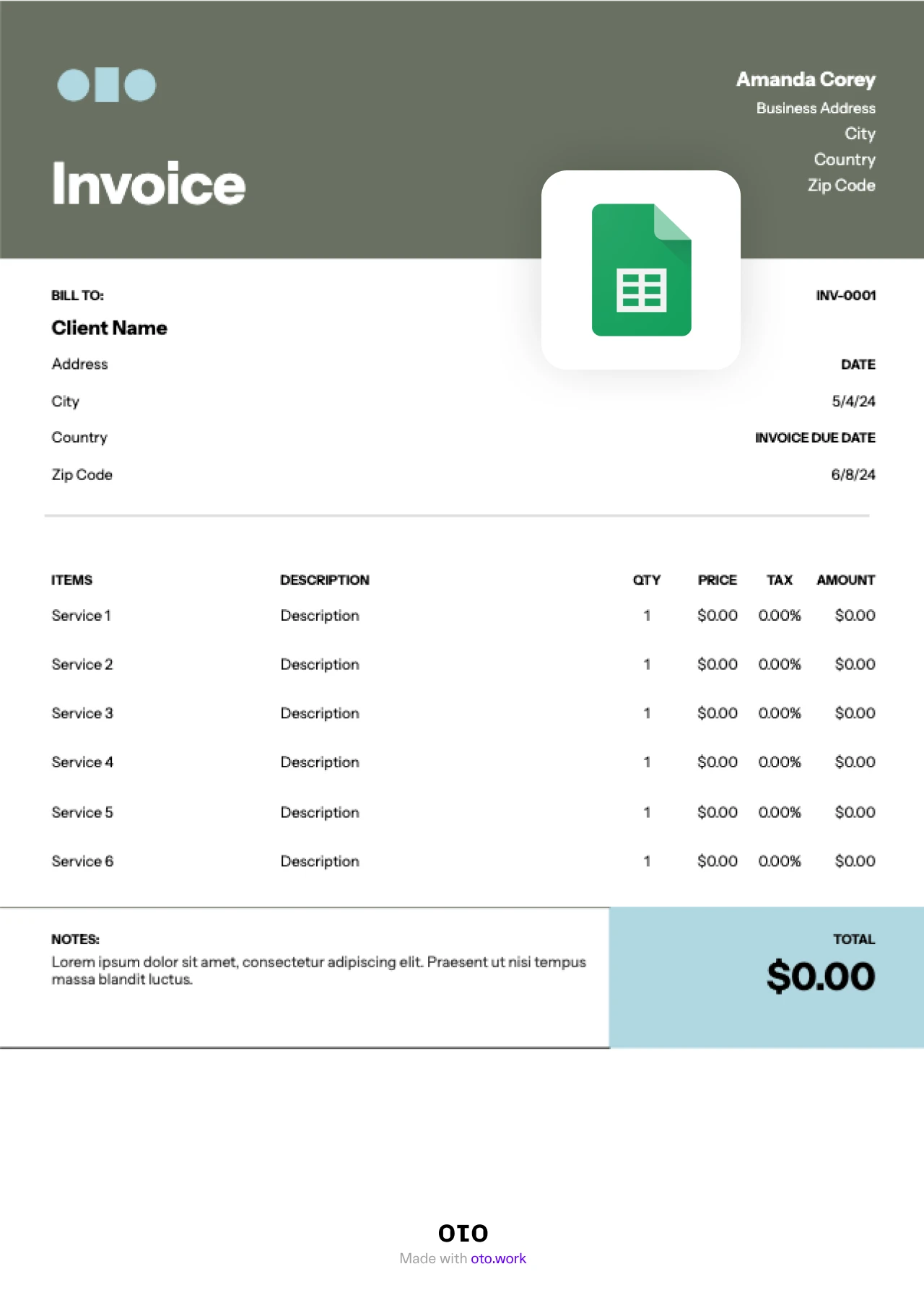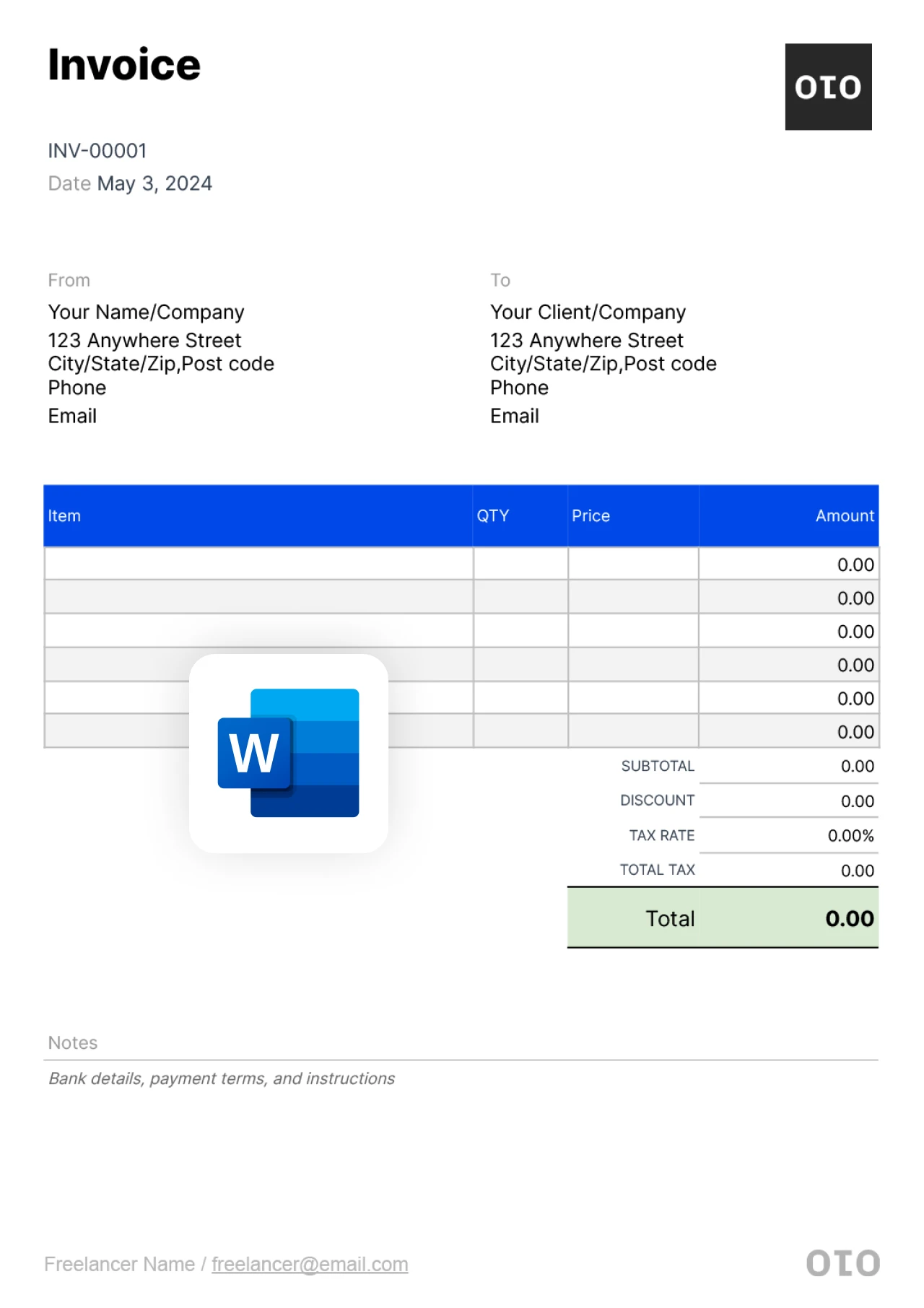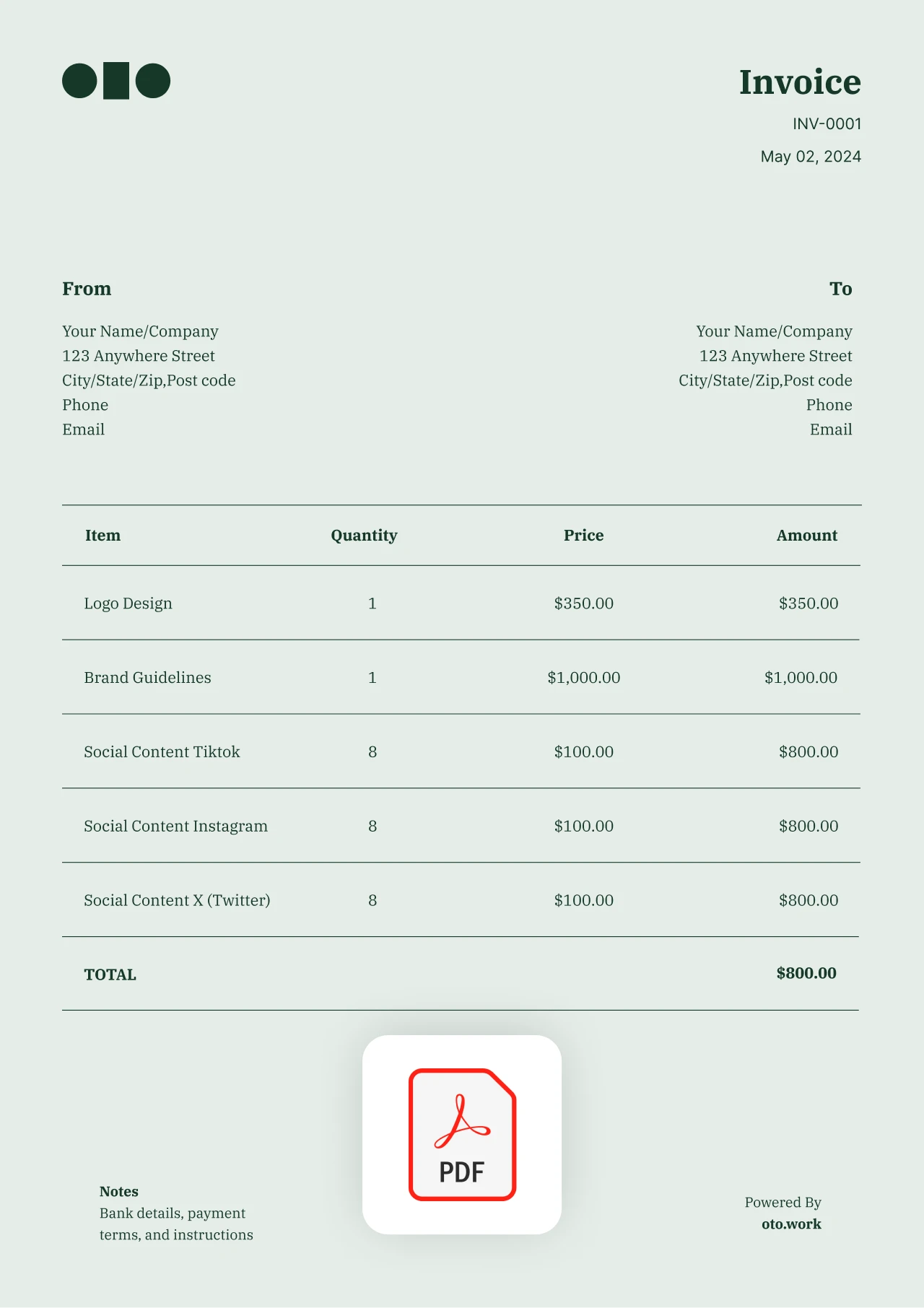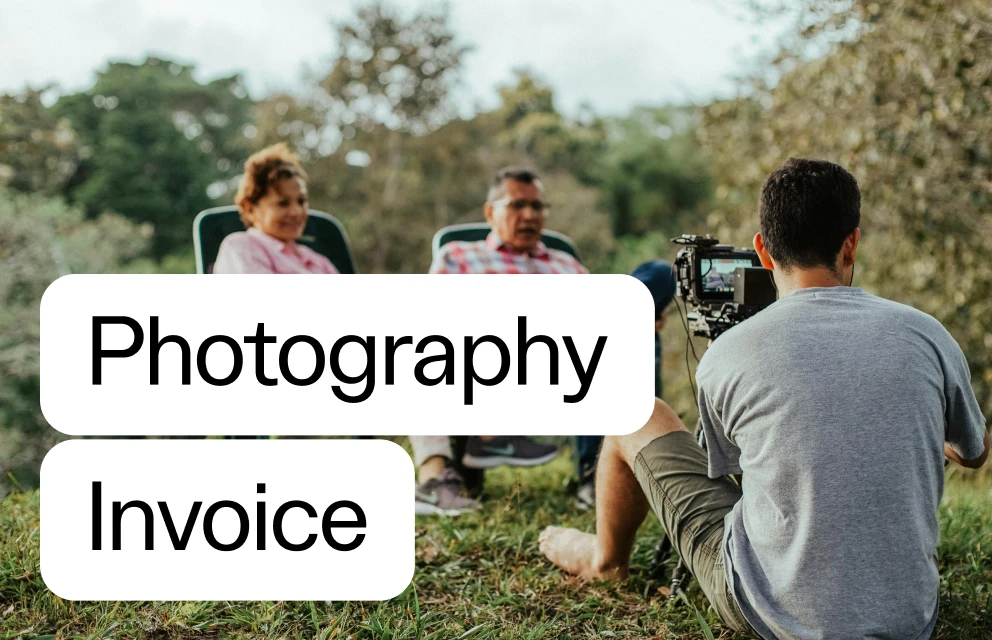Freelance Videographer Invoice Template
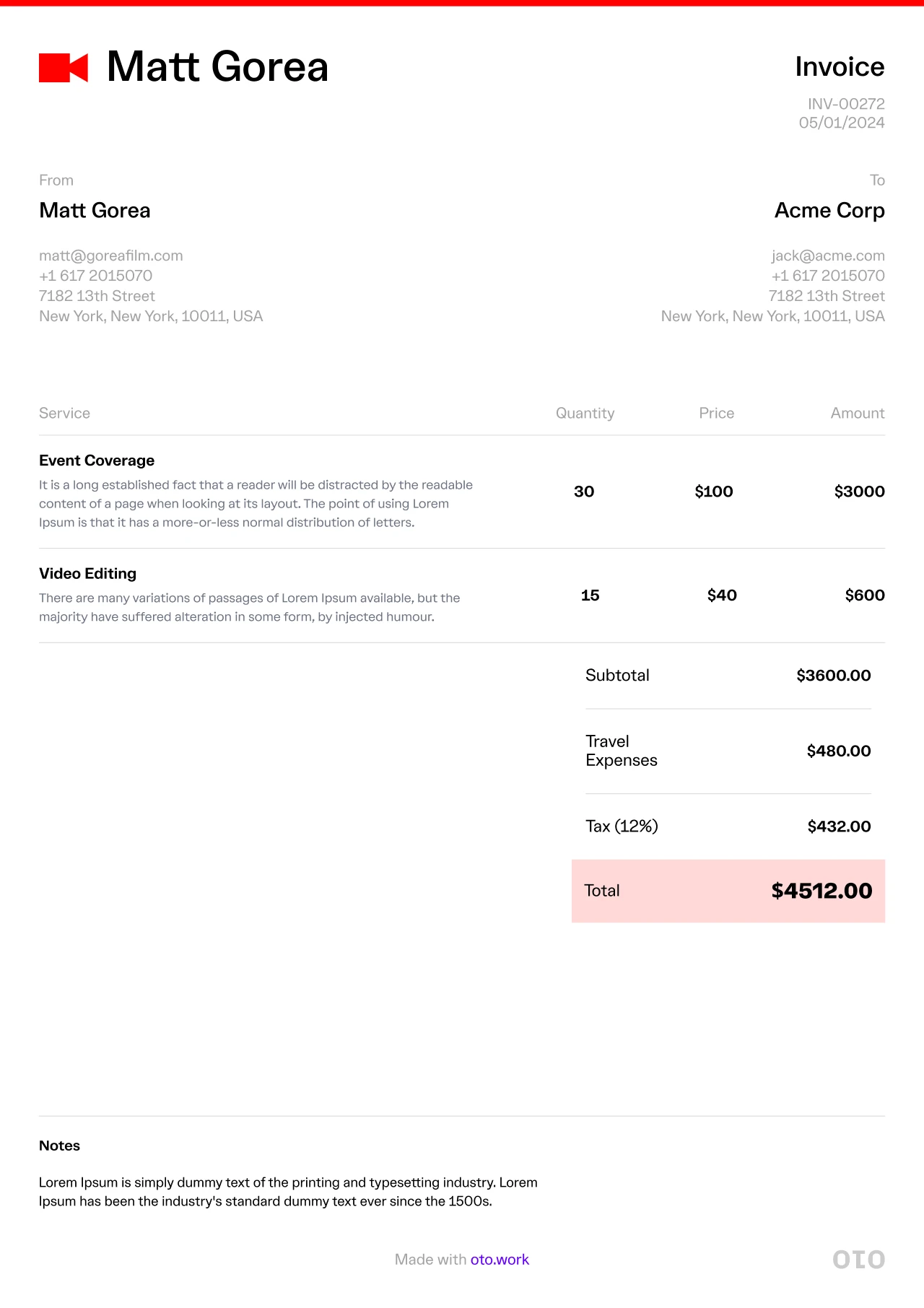 FREE
FREECreate A Free Invoice
Elevate your freelance videography billing with our fully customizable invoice template. Seamlessly integrate your branding while documenting project details from pre-production to post-production.
As a freelance videographer, your work is a perfect blend of creativity and professionalism. You pour your artistic vision into every project, meticulously crafting visuals that captivate audiences.
While your artistic vision and technical expertise bring video projects to life, a critical business element demands equal attention, the invoicing process.
Why Do You Need a Video Production Invoice?
A well-crafted video production invoice is more than just a request for payment; it's a reflection of your credibility and a testament to the value you bring to each client engagement.
Without a clear and comprehensive invoice, you risk miscommunication, delayed payments, and even legal disputes down the line.
The primary purpose of a video production invoice is to clearly outline the services rendered, the associated costs, and the terms of payment.
By presenting a detailed invoice, you demonstrate your commitment to organization, accountability, and attention to detail – qualities that are highly valued in the videography industry.
As a freelancer, bookkeeping is essential for staying compliant with tax regulations and accurately tracking your income and expenses.
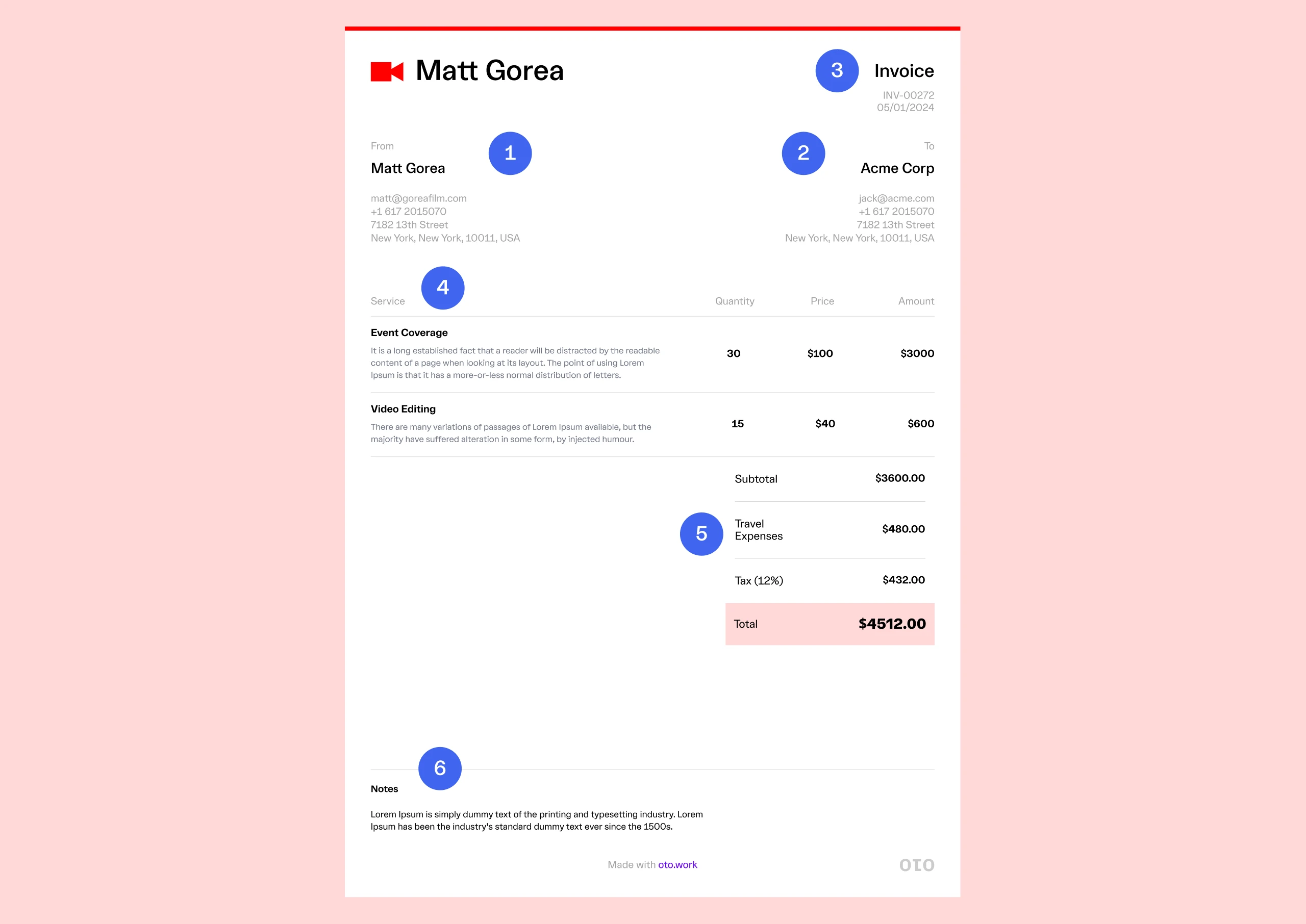
What should be included in a video production invoice?
A comprehensive video production invoice is more than just a list of charges; it's a detailed account of the services provided, ensuring transparency and preventing misunderstandings.
To create an effective invoice, there are several key elements that should be included:
1. Contact Information: Include your business name, address, phone number, and email address on the invoice, making it easy for clients to reach out with any questions or concerns.
2. Client and Project Details: The invoice should clearly state the client's name, company (if applicable), address, and the specific project or event for which the videography services were rendered. This information serves as a reference for both parties and helps maintain organized records.
3. Invoice Number and Date: Assign a unique invoice number to each document and include the date of issue. This not only keeps your records organized but also helps track payments and facilitates easier reference in case of any future queries or disputes.
4. Line-Item Breakdown: Provide a detailed breakdown of all the services rendered, including pre-production tasks, shooting days, editing hours, and any additional services or equipment rentals. Clearly state the description, quantity, and individual costs for each item, ensuring transparency and enabling clients to understand exactly what they are being charged for.
5. Subtotals and Totals: Clearly display the subtotals for each service category and a grand total at the end, making it easy for clients to identify the overall cost of the project. Don't forget to include your taxes, and discount when applicable.
6. Payment Terms and Due Date: Specify the payment terms, such as net 30 days or upon receipt, and include a due date for the payment. This information helps clients plan their budgets and ensures timely payment for your services.
7. Additional Notes or Terms: If applicable, include any additional notes or terms specific to the project, such as late payment fees, copyright ownership, or usage rights for the video content.

What types of videographer invoices are there?
As a freelance videographer, the nature of your projects can vary greatly, from corporate events to weddings, music videos, and more.
To accommodate these diverse needs, it's essential to understand the different types of invoices you may encounter and tailor them accordingly.
Fixed-Price Invoice
This type of invoice is commonly used for projects with a predetermined scope and fee.
The client agrees to pay a fixed amount for the videography services, regardless of the number of hours or resources required.
Time Invoice
A time or hourly invoice is typically used for projects where the scope or duration is more fluid.
You would charge the client based on the actual hours worked during the project.
This type of invoice is often preferred for long-term or open-ended projects, as it allows for greater flexibility.
Milestone Invoice
For larger or more complex video productions, you may choose to invoice based on predefined milestones.
These milestones could include project phases such as pre-production, shooting, post-production, and delivery.
By segmenting the project and billing at each milestone, you ensure consistent cash flow and minimize the risk of non-payment.
Recurring Invoice
If you provide ongoing videography services for a client, such as monthly or quarterly projects, a recurring invoice can streamline the invoicing process.
This type of invoice is sent at regular intervals, typically with the same set of services and fees, making it easier for both parties to manage payments and budgeting.
Retainer Invoice
In some cases, clients may request a retainer agreement, where they pay an upfront fee to secure your services for a specific period or project.
A retainer invoice outlines the terms of this agreement, including the retainer fee, the services covered, and any additional charges that may apply.
Readers also liked
How To Get A Press Pass As A Freelance Photographer
How To Book Photography Clients: 11 Proven Strategies
Should A Freelancer Form An LLC?
How To Write An Effective Freelance Proposal: 9 Mistakes To Avoid
What Is A Freelance Contract? Best Practices And 13 Clauses To Include
Benefits of Using oto for Your Invoicing Needs
Manual invoicing processes can be time-consuming and prone to errors, diverting valuable resources away from your core creative work. Fortunately, the rise of automation tools has revolutionized the way invoices are created, tracked, and managed, empowering you to streamline your billing workflows and focus on what you do best.
Create Professional Templates
Bid farewell to tedious manual formatting and enjoy a vast library of customizable, professional-looking invoice templates. These templates ensure a consistent brand identity and allow you to tailor each invoice to your specific project needs.
Automate Recurring Invoices
If you have clients who require regular videography services, such as monthly or quarterly projects, automated recurring invoices can save you significant time and effort. Set up the invoices once, and let the software handle the rest, ensuring timely and accurate billing for your clients.
Track Payments and Send Reminders
with invoicing tools, you can easily track invoices, set up payment reminders, and even enable online payment options for your clients, streamlining the entire collection process.
Access Detailed Reports and Analytics
Gain valuable insights into your performance, outstanding invoices, and revenue streams through detailed reports and analytics. This data can inform your business decisions, pricing strategies, and help you identify areas for improvement.
Final Tip: Always Follow-Up
Remember, sending an invoice is only the first step. Following up on unpaid invoices is crucial.
Automate your follow-up emails with oto to maintain professionalism and ensure timely payments.
More Invoice Template Formats

